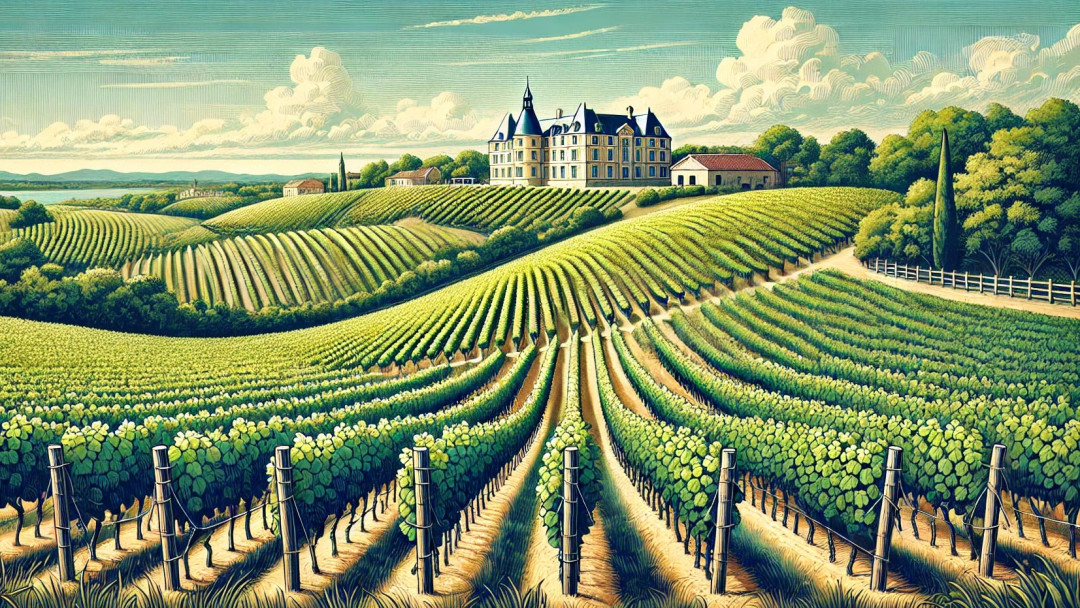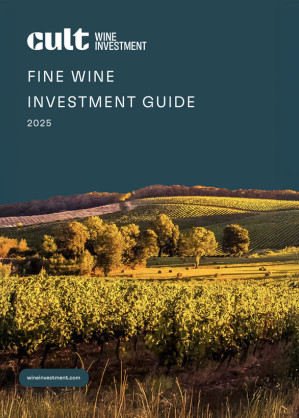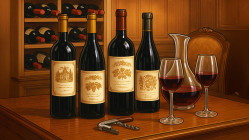
Characteristics of the Appellations and Historic Châteaux of Bordeaux
Wine production in Bordeaux's revered French region is vast in size and scope. With over 125,000 hectares under vine and more than 7,300 châteaux producing well over 10,000 different wines, the area's offerings range from mass-produced supermarket wines to some of the world's finest, most exclusive, and highly sought-after wines.
Of Bordeaux's 60-odd appellations – known as Appellation d'Origine Contrôlée (AOC), which indicate the geographical origin, quality, and (generally) the style of wine – some are particularly well-known for their higher quality, investment-level wines. Here, we'll explore these distinct appellations, the regions in which they're located, and the key characteristics of the fine wines they produce.
Fine Wine Appellations in the Médoc
Located on the Left Bank, between the Atlantic Ocean and the Gironde estuary in southwestern France, the Médoc enjoys a relatively hot and humid climate, bathed in light, sun, and ample air circulation. This microclimate protects vines from late spring frosts and fungal diseases, helping to produce some of the boldest and most tannic wines in all of Bordeaux. Key appellations producing some of the region's finest wines include:
Pauillac
Pauillac is perhaps the most famous Bordeaux wine-producing commune in the Médoc, home to three of Bordeaux's five First Growth châteaux: Château Lafite Rothschild, Château Latour, and Château Mouton Rothschild.
The northern part of the appellation features high elevations and deep gravel on top of sand, marl, and limestone, while the southern part has larger gravel rocks and stones with more clay in the sub-soils.
The finest châteaux incorporate both to create wines with delicate aromas of black cherry, liquorice, crème de cassis, sour cherry, rose, iris, cedar, smoke, and incense – classic Bordeaux characteristics.
Top Châteaux in Pauillac:
- Château Lafite Rothschild: Established in the 17th century, Lafite Rothschild has long been synonymous with elegance and quality, often described as the pinnacle of Bordeaux wine.
- Château Latour: Dating back to the 14th century, Château Latour is renowned for its powerful and long-lived wines, embodying the strength and resilience of the Pauillac terroir.
- Château Mouton Rothschild: Elevated to First Growth status in 1973, Mouton Rothschild is celebrated for its exceptional wines and artistic labels commissioned from famous artists.
- Château Pontet-Canet: Pioneering biodynamic viticulture in Bordeaux, Pontet-Canet's history dates to 1705, with a commitment to sustainability and quality.
Saint-Estèphe
Saint-Estèphe is known for its rich mixture of rocks, clay, limestone, and gravel, with more clay here than in Pauillac, Saint-Julien, or Margaux.
Its proximity to the River Garonne, with its slopes and elevations, creates a variety of microclimates. The appellation's wines are powerful, rich, and full-bodied, designed to age with purity and intensity seldom found in other Bordeaux wines.
Top Châteaux in Saint-Estèphe:
- Château Calon-Ségur: One of the oldest estates in the Médoc, Calon-Ségur dates to the 12th century and is known for its romantic heart-shaped label.
- Château Cos d'Estournel: With its distinctive pagoda-style architecture, Cos d'Estournel, founded in the early 19th century, is celebrated for its opulent and exotic wines.
- Château Montrose: Established in 1815, Montrose is renowned for producing some of the most consistent and long-lived wines in Saint-Estèphe.
Saint-Julien
The smallest of the major Bordeaux appellations in the Médoc, Saint-Julien's terroir comprises soils mixed with gravel, sand, limestone, and clay.
The best vineyards have gentle slopes with access to the Gironde estuary, which helps create a microclimate. Top Saint-Julien wines are noted for their intense and complex notes of blueberry, blackcurrant, plum, tobacco, and liquorice.
Top Châteaux in Saint-Julien:
- Château Ducru Beaucaillou: Known for its distinctive and beautiful architecture, Ducru Beaucaillou has been producing exceptional wines since the 18th century.
- Château Léoville Barton: Founded in the early 19th century, Léoville Barton remains family-owned and is renowned for its traditional, age-worthy wines.
- Château Talbot: With a history stretching back to the 15th century, Talbot is celebrated for its consistent quality and approachable style.
Margaux
Margaux, the southernmost appellation in the Médoc, boasts a variety of soil types, including limestone, chalk, clay, sand, and gravel, meaning the style and quality of Margaux wines can vary significantly. Archetypal Margaux wines tend to be deep, ruby in colour, perfumed and floral with soft, silky tannins. These wines are typically more refined and elegant than those from other Bordeaux regions.
Top Châteaux in Margaux:
- Château Margaux: Often referred to as the "Versailles of the Médoc," Château Margaux has been a symbol of elegance and finesse since the 12th century.
- Château Palmer: Known for its aromatic complexity and luxurious texture, Palmer has a rich history dating back to the early 19th century.
- Château Giscours: With records dating back to the 14th century, Giscours is noted for its grandeur and the opulent style of its wines.
- Château Rauzan-Ségla: Rauzan-Ségla, established in the 17th century, has a reputation for producing wines with excellent balance and longevity.
Fine Wine Appellations in Graves
Graves – the original name for the Pessac-Léognan appellation – is a Left Bank region located just south and east of Bordeaux city, characterised by and named for its unique gravel soils (graves).
Unique among Bordeaux's sub-regions, Graves is equally respected for both its red and white wines. Historically, however, Graves is seen as the birthplace of Bordeaux's highest-quality reds, earning the region a shining global reputation. Collectors with a nose for investment-worthy wines should pay attention to the following appellations:
Pessac-Léognan
Pessac-Léognan became its own appellation in 1987. It is well-suited to the production of red, white, and sweet Bordeaux wines, though this diversity requires growers to remain vigilant as the soils can be too warm for white wines and slightly too cool for reds.
This situation demands extreme care and attention to detail, making wines from Pessac-Léognan some of the highest quality in Bordeaux. Reds are supple, firm, and rich with blackberry notes, while whites are powerful, round, and lively with floral, fruity aromas.
Top Châteaux in Pessac-Léognan:
- Château Haut-Bailly: Renowned for its elegant and balanced wines, Haut-Bailly's history dates to the 16th century and has consistently been a benchmark for quality.
- Château Haut-Brion: One of the oldest and most prestigious châteaux in Bordeaux, Haut-Brion has been producing world-class wines since the 16th century and was the first château to introduce the concept of estate bottling.
- Château La Mission Haut-Brion: Sister estate to Haut-Brion, La Mission Haut-Brion has a history dating back to the 16th century and is known for its powerful and complex wines.
- Domaine de Chevalier: With a history going back to the 18th century, Domaine de Chevalier is celebrated for its refined and long-lived wines, both red and white.
Sauternes
Sauternes is a unique appellation in the Graves region, primarily producing sweet whites renowned for their intense fruity, floral, and vanilla aromas.
Located just 25 miles southeast of Bordeaux city, Sauternes has five communes, each with its unique terroir comprising chalk, limestone, sand, clay, gravel, and rolling hills aside steep elevations. It's the most expensive wine to produce in all of Bordeaux.
Top Châteaux in Sauternes:
- Château Climens: Known as the "Lord of Barsac," Climens has been producing exquisite, sweet wines since the 16th century, prized for their elegance and longevity.
- Château Guiraud: With origins in the 18th century, Guiraud is renowned for its rich, complex wines and commitment to organic viticulture.
- Château Suduiraut: Dating back to the 15th century, Suduiraut is famous for its opulent and long-lived Sauternes.
- Château d'Yquem: Arguably the most famous sweet wine producer in the world, d'Yquem has a history of excellence dating back to the 16th century and is the only Sauternes to hold the Premier Cru Supérieur classification.
Fine Wine Appellations on the Right Bank
While the Left Bank is famed for its gravelly soil, cool climate, and wines with high acidity, tannins, and immense ageing potential, the Right Bank is better known for soil rich in clay and limestone, warmer weather, and smooth, 'drink me now' wines – predominantly Merlot, as opposed to the Left Bank's dominant Cabernet Sauvignon.
The Right Bank provides an excellent jumping-off point for collectors looking to create a varied, diverse portfolio of Bordeaux wines. However, two appellations stand out for investment potential:
Saint-Émilion
Saint-Émilion, in Bordeaux's Libournais region, is said to be the oldest active wine-producing appellation in Bordeaux, with a history dating back to the ancient Romans. Now one of the biggest producers in Bordeaux, the appellation can be roughly divided into three distinct terroirs: the limestone plateau, the slopes closest to the plateau, and the flats.
This variety leads to differences in wine taste and style across the area, but the finest châteaux produce generous, full-bodied wines with a velvety tannic structure and aromas of red fruit, sweet spices, and smoky vanilla.
Top Châteaux in Saint-Émilion:
- Château Angélus: Established in the 18th century, Angélus is noted for its iconic bell tower and its full-bodied, expressive wines.
- Château Ausone: With roots in Roman times, Ausone is one of Saint-Émilion's most historic and prestigious estates, known for its rare and exceptional wines.
- Château Canon: Dating back to the 18th century, Canon is celebrated for its elegant and refined wines, reflecting the limestone-rich terroir.
- Château Cheval Blanc: One of Bordeaux's most renowned estates, Cheval Blanc has a history of producing legendary wines since the 19th century, known for their complexity and longevity.
Pomerol
What Pomerol lacks in size – it's the smallest of all Bordeaux's major wine-producing appellations – it makes up for in reputation, producing some of the most expensive, collectible, and sought-after wines in the world.
Curiously, it is the only major Bordeaux appellation that has never been classified. Like Saint-Émilion, its terroir can be divided into three parts, with the best estates located on the 'Pomerol plateau', home to different clays, gravel, and iron deposits in the soil. Wines from Pomerol are typically refined, powerful, intense, and sensual, with aromas of violet, red berries, truffles, and game.
Top Châteaux in Pomerol:
- Château Clinet: Dating back to the 19th century, Clinet is known for its refined and powerful wines, often described as the epitome of Pomerol elegance.
- Château Lafleur: Founded in the 19th century, Lafleur produces some of the most distinctive and complex wines in Pomerol, prized for their depth and longevity.
- Château Le Pin: A relative newcomer, established in the 20th century, Le Pin has quickly become one of the most sought-after wines in the world, known for its lush and opulent style.
- Petrus: Perhaps the most famous name in Pomerol, Petrus has a history dating back to the 19th century and is renowned for its rich, velvety wines that command astronomical prices.
The Variety of Bordeaux Wine Styles
Bordeaux's wine region offers a remarkable variety of styles, each with its own unique character and storied history. From the bold, tannic wines of the Médoc to the elegant and refined bottles of Margaux, and from the renowned estates of Saint-Émilion to the luscious sweetness of Sauternes, Bordeaux has something to captivate every wine lover.
Understanding the distinctive qualities of these appellations and the historic châteaux that produce them enriches the experience of enjoying Bordeaux wines. Whether you're savouring the robust reds of Pauillac or the smooth Merlots of Pomerol, Bordeaux's rich heritage and exceptional wines provide endless opportunities for discovery and pleasure.

Fine Wine Investment Guide 2025
Download your guide to fine wine investing and discover how this unique, tangible, and tax-efficient asset can enhance portfolio diversification. Gain valuable knowledge and insights with this indispensable document for investors.



